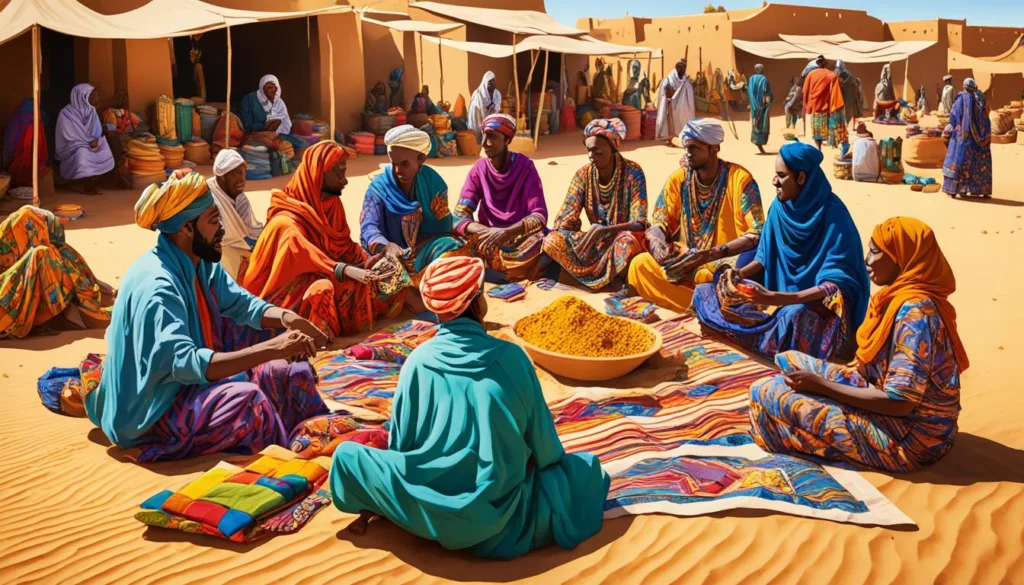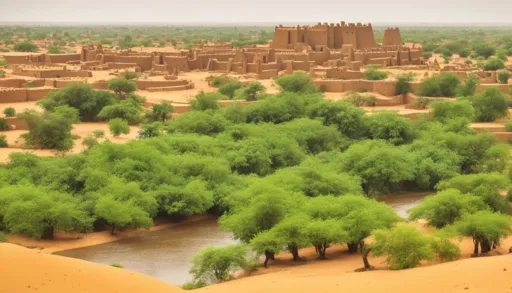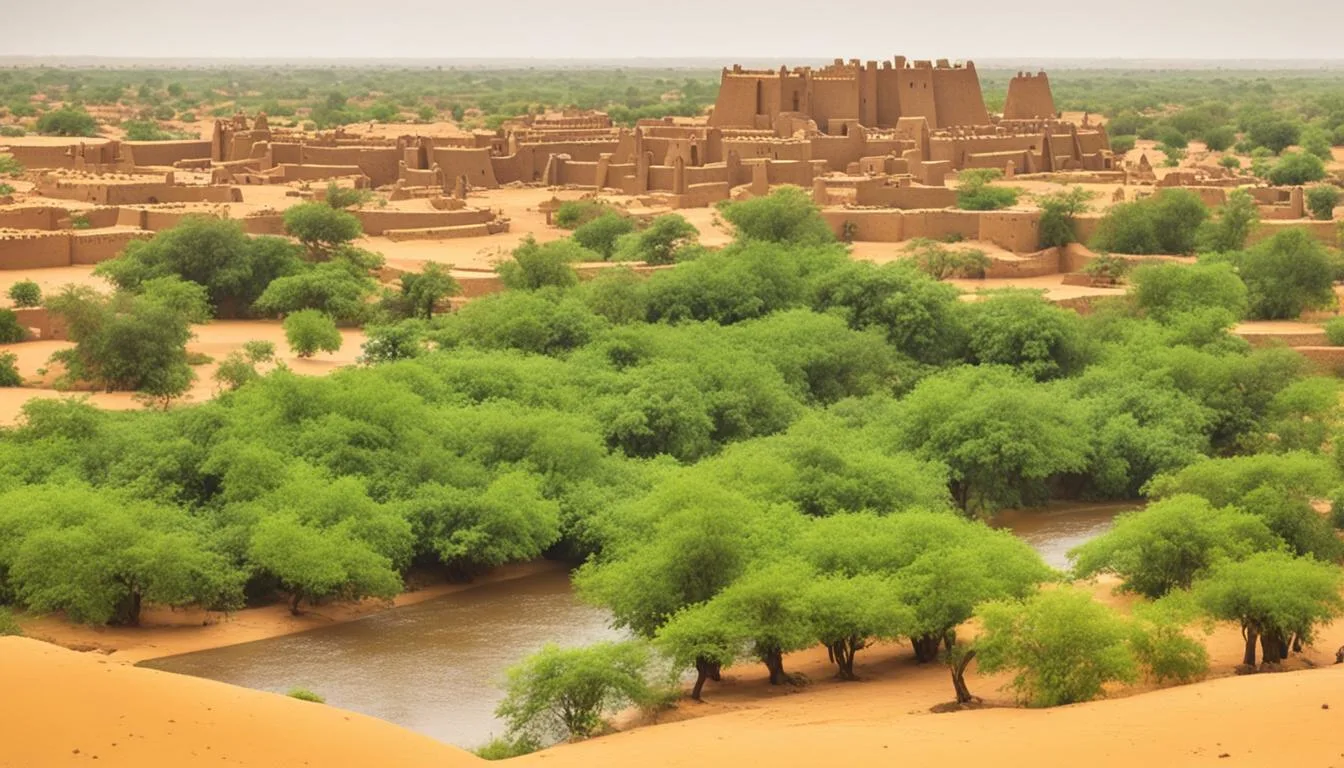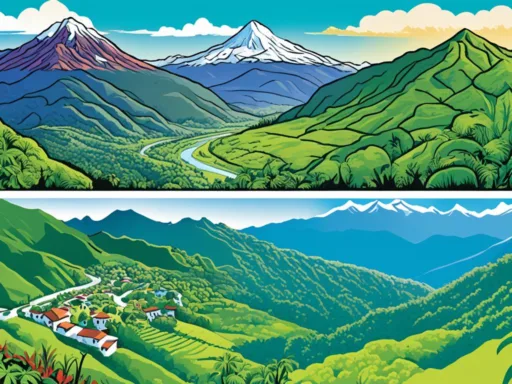Embarking on a journey to Mali is diving into a world where every season paints a different hue on its expansive Sahelian canvas. But when exactly does Mali beckon the curious traveler with its optimum blend of culture, climate, and landscapes? Understanding the Mali travel season is pivotal to unraveling the country’s poignant allure. With many weighing options on the Best Time to Visit Mali, it often comes down to a balance between weather comfort and cultural vibrancy. In the heart of West Africa, the peak tourist season in Mali is not merely a period; it’s an ever-shifting mosaic that transforms with the country’s diverse environmental and social rhythms.
Choices vary depending on whether one seeks the golden sands of the Sahara or the bustling markets of Bamako, making the ideal time to visit Mali a subjective feast. October to January court the explorer with dry weather and immaculately clear skies, a prelude to the harmattan’s sandy symphony. Yet, isn’t there more to the Mali tourism calendar than just clear skies and dry landscapes? Delve into Mali’s seasonal wardrobe and discover when its cultural heartbeat syncs with the traveler’s soul.
Key Takeaways
- October to January is widely regarded as the best period to visit, aligning with optimal weather.
- Each region in Mali offers a distinctive climate, influencing when and where to travel.
- Mali’s peak tourist season coincides with cultural events and cooler climatic conditions.
- The ideal travel season in Mali extends beyond weather patterns to cultural festivities.
- The Mali tourism calendar is rich with experiences that vary from season to season.
- Travelers must consider both natural and cultural climates to decide the best travel time.
- Mali’s geographical diversity requires keen attention to regional weather and events for planning.
Understanding Mali’s Climate: Weather Patterns and Tourist Comfort
Stepping into Mali is a venture through a land of climate diversity that shapes every traveler’s experience. Here, the weather is not just a backdrop but a vibrant character in the story of the region. The landlocked nation’s climate ranges from the humid Sudanic and the dry Sahelian to the extreme aridity of the desert. Each zone offers distinct weather patterns, affecting everything from the cultural festivities to the accessibility of Mali’s natural wonders. For tourists, understanding the complexities of Mali weather and climate is key to a comfortable and enriching journey.
Temperature Variations Across Regions
As a traveler, grasping the temperature nuances across Mali’s expansive terrain is essential. The sudanic climate, with its agreeable warmth, welcomes visitors into a soothing embrace with temperatures that consistently range from 75 to 86 °F. Contrastingly, the Sahelian zone ushers in a more profound warmth where the mercury levels fluctuate between 73 to 97 °F, presenting a hotter setting for adventure-seekers. For those venturing into the desert regions, be prepared for a fiery climate where daytime temperatures can soar to nearly 140 °F — a testament to the extremes of Mali’s environmental tapestry.
Rainfall and the Rhythms of the Niger River
The annual dance of rainfall in Mali is a performance that varies from the steady drizzle in the Sudanic zone, where the land luxuriates in 20 to 55 inches of rain, to the lighter touch in the Sahelian zone with its modest 8 to 20 inches. Yet, it is the storied Niger River that truly encapsulates the rhythm of life here. Stretching over 1,000 miles within Mali, its seasonal floods nourish the soil and dictate agricultural cycles. For those visiting, the river’s disruptions during the rainy season can become a bard’s tale, with potential for delayed travel due to swollen banks and blocked roads — Mali travel tips often suggest planning around these natural events.
Weather in Mali for tourists becomes a crucial consideration, particularly when engaging with the river’s offerings, from fishing excursions to riverboat journeys. Recognizing this can enhance your trip, turning what could be a mere travel inconvenience into an immersive exploration of the land’s ebb and flow. The provided image strikingly captures the Niger River’s impactful role on the region’s climate and terrain.
| Climate Zone | Temperature Range | Annual Rainfall |
|---|---|---|
| Sudanic | 75 to 86 °F | 20 to 55 inches |
| Sahelian | 73 to 97 °F | 8 to 20 inches |
| Desert | Up to 140 °F (Daytime) | Minimal |
Gearing up for a trip to Mali means not just packing your bags but also planning your visit around these climatic factors. By doing so, adventurers and culture enthusiasts alike can fully engage with Mali’s diverse environments, ensuring both comfort and the opportunity to witness the country’s climatic wonders in full swing.
Exploring Mali’s Sahelian and Saharan Wonders
For those wondering when to go to Mali, the nation’s diverse geography offers clues to timing your journey. There is a time for every traveler to explore Mali’s impressive Sahelian culture and Saharan landscapes, each with its own appeal. Whether you’re fascinated by the vastness of the Sahara desert or the historical grandeur of Sahelian architecture, there’s a season that perfectly accommodates these experiences.
The heart of Sahelian culture can be experienced in its full splendor during the dry season, starting from October to January. During this period, the weather is favorable for visiting the architectural marvels like the Great Mosque of Djenné, and the awe-inspiring Bandiagara Escarpment — a UNESCO World Heritage Site — located in Dogon Country. These sites not only reflect Mali’s indigenous culture but are also a testament to the nation’s historical significance on the trans-Saharan trade routes.

- The vast Saharan landscapes with their unique ecosystem can be best enjoyed from November to February, before the intense heat sets in, making it possible to explore the desert’s majestic dunes and the lifestyles of nomadic tribes.
- In the Sahel, which is characterized by grasslands and sparse rainfall, cultural activities and traditional lifestyles are more accessible to tourists during the cool dry season.
- For avid bird watchers and nature enthusiasts, the optimal visiting season also falls outside of the rainy months, when migratory birds flock to the inner Niger Delta region.
Mali’s contrasting environments, arising from its historical wealth and varied topography, offer tourists a plethora of vistas ranging from flat grasslands to rugged plateaus. The local climate thus plays a crucial role in framing the visitor experience, making it essential to align travel plans with the most favorable conditions for the desired activity whether its exploration of Sahelian culture or immersion into the vast Saharan landscapes.
The Cultural Calendar: Festivals and Events in Mali
Immersing in Mali’s colorful events encapsulates the essence of its soul, where every drumbeat and melodic lyric narrates the rich history intertwined with the present. Mali’s infectious energy in its cultural festivities introduces visitors to a world where traditions thrive and the community gathers to celebrate their heritage.
Every year the Mali tourism calendar is punctuated with events that are as diverse as the country itself. Among them, the Festival of the Niger is a standout event that punctuates the hearts and diaries of those planning their Mali travel season.
The Festival of the Niger: A February Highlight
Developing a calendar for Mali cultural events must undoubtedly include the Festival of the Niger. This vibrant celebration, taking place in the historic city of Ségou, is a convergence of musicians, dancers, and artisans, all displaying the vibrancy of Malian culture. Here, the river comes alive amidst a backdrop of traditional pirogues and riverside festivities.
Music and Storytelling: Mali’s Living Heritage
Music is Mali’s gift to the world, with rhythms and harmonies that transcend borders. Its reputation for being a cradle of musical talent is celebrated through oral histories woven by the Griots, custodians of the Malian storytelling tradition. While the legendary Festival au Désert is on hiatus, the nightlife of Bamako still beats to the sounds of local and international artists, preserving the inherent cultural legacy.
| Event | Location | Month | Highlight |
|---|---|---|---|
| Festival of the Niger | Ségou | February | Music Performances, Pirogue Races |
| Bamako Nightlife | Bamako | Year-round | Live Music, Dance |
The rhythms of Mali not only echo through its musical contributions but also through the steps and stories of its people. Ensuring that the legacy continues, these cultural events remain pivotal in the Mali tourism calendar, offering an immersive travel season for enthusiasts yearning for authentic Sahelian experiences.
Mali Travel Season: Navigating the Dry and Wet Periods
When planning your exploration of Mali, it’s essential to consider the country’s distinctive seasonal patterns which have significant implications for travelers. Mali weather and climate draw a stark line between the dry season, lasting from November to June, and the wet season, which usually spans from the end of June to late September. Each of these periods offer a different palette of experiences, impacting everything from landscape photography to practical travel logistics.
For those wondering about the Best Time to Visit Mali, the dry season is often favored for its reduced humidity and the absence of rain that allows for better road conditions and clearer blue skies – perfect for witnessing Mali’s diverse and stunning landscapes. However, it’s during this period that the harmattan winds sweep through, carrying sand and dust, and occasionally hampering visibility. Despite this, the dry season remains part of Mali’s tourism calendar highlights, catering to travelers seeking smooth travels and excellent sightseeing opportunities.
On the flip side, the rainy season presents a Mali transformed with lush greenery, offering a spectacle of its agricultural abundance and natural beauty. Yet, it’s also a time when challenges arise – such as a higher possibility of contracting malaria, potential navigational limits on the Niger River, and floods which could impact road connectivity. Astute travelers must weigh these factors, considering whether the allure of vibrant landscapes outweighs the practical travel concerns. Ultimately, recognizing Mali’s seasonal rhythms is key to crafting a travel experience that aligns with your interests and expectations.
Mali Travel Season: Navigating the Dry and Wet Periods
What is the best time to visit Mali?
What are the peak tourist seasons in Mali?
How is the Mali tourism calendar influenced by weather?
What are the temperature variations across regions in Mali?
How does rainfall and the rhythms of the Niger River affect travel in Mali?
What travel tips should tourists consider when visiting Mali?
When is the best time to explore the Sahelian culture in Mali?
What makes the Saharan landscapes in Mali special?
When is the Festival of the Niger and what can visitors expect?
How important are music and storytelling in Mali, and how can tourists experience this?
How does the dry and wet season affect travel in Mali?
Which seasons feature Mali’s weather and climate most suitable for tourism?
Source Links
- https://www.responsiblevacation.com/vacations/mali/travel-guide/best-time-to-visit-mali
- https://www.doe.virginia.gov/teaching-learning-assessment/k-12-standards-instruction/history-and-social-science/instructional-resources/mali-ancient-crossroads-of-africa/geography
- https://www.britannica.com/place/Mali






